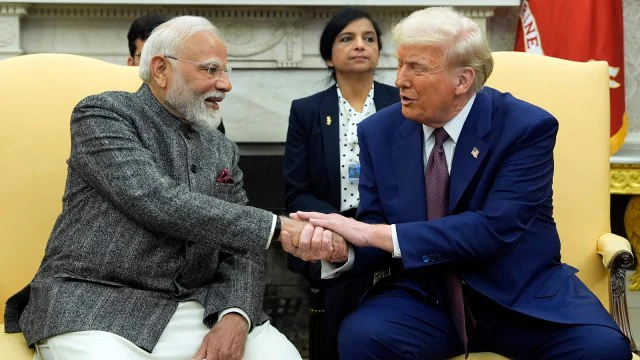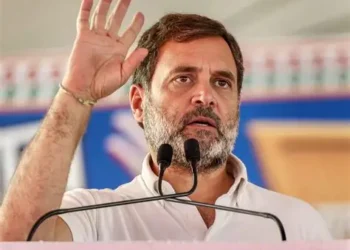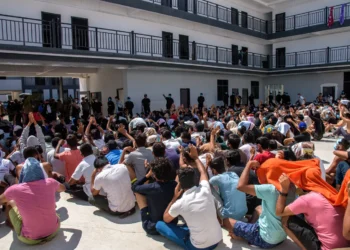Just hours before meeting PM Modi, President Trump signs an order directing his administration to impose country-specific tariffs, aiming to rebalance global trade. India is expected to be among the hardest hit.
BY PC Bureau
Prime Minister Narendra Modi arrived in Washington, D.C., early Thursday morning for his first U.S. visit since Donald Trump returned to the White House. Just hours before hosting Modi, President Trump ordered his administration to explore reciprocal tariffs on multiple trading partners, signaling a potential escalation in his efforts to reshape the global trade system, which he claims is unfair to the U.S.
On Thursday, Trump signed a directive instructing the U.S. Trade Representative and the Commerce Secretary to propose new country-specific tariffs aimed at rebalancing trade relations—a complex process that could take weeks or months to finalize. Howard Lutnick, Trump’s nominee for Commerce Secretary, stated that all studies on the matter should be completed by April 1, after which Trump could take immediate action.
“I call it an element of success, reciprocal tariffs.” President Trump finishes press conference with Indian PM Modi by remarking on their beautiful ongoing relationship, as well as what he has already historically accomplished in only 3 weeks.@realdonaldtrump @Bannons_WarRoom pic.twitter.com/Cn1Sgxgrd4
— Real America’s Voice (RAV) (@RealAmVoice) February 13, 2025
India Among the Hardest Hit
According to a Bloomberg report, India is expected to be one of the most affected nations under the proposed tariff plan. Trump has repeatedly criticized India’s high tariffs, stating: “India has more tariffs than any other country.”
The new import taxes will be tailored for each country, not only to counter their tariffs on U.S. goods but also to address non-tariff barriers such as subsidies, regulations, value-added taxes (VATs), exchange rates, and other trade restrictions. A White House official emphasized that the goal is to level the playing field for American exports.
Before meeting with Modi, Trump announced "reciprocal tariffs," which was clearly intentional. It is well known that India imposes high tariffs on imported goods to protect its domestic market.
I am not optimistic about the relationship between India and the United States.… pic.twitter.com/OXscExYj8k
— DaiWW (@BeijingDai) February 13, 2025
ALSO READ: Tesla in India? Elon Musk’s Meeting with PM Modi Sparks Speculation
“I’ve decided, for purposes of fairness, that I will charge a reciprocal tariff, meaning whatever countries charge the United States of America,” Trump declared in the Oval Office. “In almost all cases, they’re charging us vastly more than we charge them, but those days are over.”
Trump also announced plans for additional import taxes on cars, semiconductors, and pharmaceuticals at a later stage, beyond the reciprocal tariffs.
Trump pointed to European Union trade policies, particularly VATs, as an example of what the U.S. aims to counter. He also singled out Japan and South Korea, accusing them of exploiting unfair trade advantages.
The proposed reciprocal tariffs mark Trump’s most extensive action yet to reduce U.S. trade deficits and counter what he calls discriminatory trade practices. His administration has already imposed a 10% tariff on Chinese goods and is set to implement a 25% duty on all U.S. steel and aluminum imports next month.
Global Economic Uncertainty
Despite Trump’s willingness to negotiate tariff reductions if other countries lower their own barriers, he made it clear there would be no exemptions or waivers under the new policy. He referenced a past decision to spare Apple Inc. from China tariffs to help it compete with Samsung Electronics but stated that this new package “applies to everybody across the board.”
Trump’s tariff strategy has injected uncertainty into global markets, leaving businesses and consumers in anticipation of potential trade disruptions. Analysts at Bloomberg Economics warn that developing economies, where average duties on U.S. products are higher, are likely to suffer the most.
While Trump’s current plan focuses on country-specific tariffs, a White House official suggested he could later shift to a universal global tariff strategy, similar to what he proposed during his 2024 presidential campaign.













